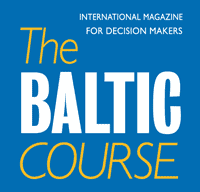Analytics, Direct Speech, Economics, Education and Science, EU – Baltic States, Markets and Companies
International Internet Magazine. Baltic States news & analytics
Sunday, 21.12.2025, 16:51
Economic growth and convergence in the Baltic States
 Print version
Print version |
|---|
The early transition phase saw very
large declines in output. The exact magnitudes remain unclear due to the
structure of the economics changing and deficient reporting to the statistical
authorities. The output declines in the early transition period were tied to
the switch from planned to market-based economic systems, but also to the
disruption of ties to the former trading partners, very high inflation and
changing demand patterns. Reliable data are available from Eurostat, the
statistics service of the EU, from 1995. That year GDP per capita PPP (i.e.
adjusted for different purchasing powers or price levels in the countries)
amounted to 26-30% of the level in the EU15, the 15 Western European EU
members. The income gap started however to narrow in the following years,
driven by rapid economic growth in the Baltic states.
The picture was abruptly disrupted
when the Russian financial crisis broke out in 1998. As the Russian economy
contracted and the value of the rouble plunged, export to Russia slumped and
confidence waned. The result was economic setbacks in the Baltic states in
1999, though with some variance across the countries.
The slowdown after the Russian
crisis was short-lived and from 2000 the Baltic states entered a period of
unprecedented growth lasting until the outbreak of the global financial crisis.
Over the years 2000-2007 the average annual rate of growth was 8% in Estonia,
8.5% in Latvia and 7.5% in Lithuania.
Commentators began referring to the
three countries as the Baltic tigers, in reference to the previously successful
South East Asian countries. Many factors contributed to the boom from 2000 to
2007. Consumer and investor confidence improved as negotiations about
membership of the European Union and Nato progressed. Large inflows of capital
from abroad meant that the Baltic households and businesses could borrow easily
and at low interest rates. Meanwhile, tourism, transport and other service
sectors thrived. The rapid economic growth meant that the income gap between
the Baltic states and Western Europe shank rapidly. While income per capita PPP
was around 30-34% of the EU15 level in 1999, it was 52-62% in 2008. Income
levels were still substantially below those in neighbouring Sweden and Finland,
but they were rapidly approaching those of several southern European countries.
The boom led to great optimism. The
Estonian prime minister, Andrus Ansip, proclaimed in 2007 that Estonia would be
one of the five richest countries in Europe within 15 years. The global
financial crisis ended these lofty hopes.
The global financial crisis hit the
Baltic states exceptionally hard. The output loss was around 14% in 2009 alone
and Estonia and Latvia also saw large losses in in the years before or after.
The Baltic states were subject to sudden stops as capital inflows ceased
abruptly, making it difficult to borrow for consumption and investment. Export
was severely hampered by declining foreign demand. Moreover, business
confidence waned and investments collapsed. The crisis led to very high
unemployment and economic hardship in turn spurring mass emigration from
especially Latvia and Lithuania. The Baltic states returned to economic growth
in 2010-2011 and have since had positive growth rates. Economic growth has
however been relatively modest, amounting to around 2-3% per year throughout
the years 2012-2016. The convergence process has slowed down and this is
particularly the case if the income level of the Baltic states is compared to
the one of Sweden or other western Baltic rim countries. In 2016 GDP per capita
PPP was 60-71% of the EU15 level and 52-61% of the level in Sweden. The somewhat
unsatisfactory growth performance following the crisis is particularly
concerning given the very large output declines during the global financial
crisis. Empirical analyses show that economic growth in the Baltic states in
the post-crisis period can be explained almost entirely by growth in the
capital stock and employment while there has been virtually no growth in the
efficiency with which these resources are used. The development has led to the
question whether the Baltic states may be caught in a middle income trap, i.e.
a situation where income convergence ceases at the time per capita income
reaches say half of the US level. Some middle-income countries in Latin America
and Asia appear to have been caught in such a trap marked by low investments
and slow technological advancement. The economic prospects for the Baltic
states have improved in 2017, and forecasts of economic growth in 2017 and 2018
have been raised as new data have become available. The upturn is largely
driven by domestic demand, in particular demand from the construction and
retail sectors.
This panoramic account of economic
developments in the Baltic states since they regained independence in 1991 has
highlighted the rapid but also very volatile economic growth. Production and living
standards have improved greatly, narrowing the gap to their Western European
peers, including its Baltic rim neighbours Finland, Sweden and Denmark. Booms
have however not been sustainable and the ensuring recessions have been
exceptionally deep causing great economic hardship. Looking ahead, the goal
must be to ensure high rates of economic growth and a continuation of the
convergence process while at the same time seeking to reduce excessive business
cycle dynamics. The economic achievements of the Baltic states in the last
quarter century have been impressive but challenges remain.








 «The Baltic Course» Is Sold and Stays in Business!
«The Baltic Course» Is Sold and Stays in Business!

